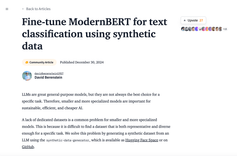Abstract
Large language models (LLMs) demonstrate impressive performance on a wide variety of tasks, but they often struggle with tasks that require multi-step reasoning or goal-directed planning. To address this, we take inspiration from the human brain, in which planning is accomplished via the recurrent interaction of specialized modules in the prefrontal cortex (PFC). These modules perform functions such as conflict monitoring, state prediction, state evaluation, task decomposition, and task coordination. We find that LLMs are sometimes capable of carrying out these functions in isolation, but struggle to autonomously coordinate them in the service of a goal. Therefore, we propose a black box architecture with multiple LLM-based (GPT-4) modules. The architecture improves planning through the interaction of specialized PFC-inspired modules that break down a larger problem into multiple brief automated calls to the LLM. We evaluate the combined architecture on two challenging planning tasks -- graph traversal and Tower of Hanoi -- finding that it yields significant improvements over standard LLM methods (e.g., zero-shot prompting or in-context learning). These results demonstrate the benefit of utilizing knowledge from cognitive neuroscience to improve planning in LLMs.






